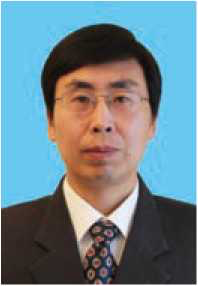Ruifeng Zhang *
1 Department of Materials Science and Engineering, Beihang University, Beijing, 100191, China
EXTENDED ABSTRACT: In this report, taking crystalline/crystalline and crystalline/amorphous bimetal heterogeneous interfaces as prototypes, the systematic studies on interfacial defect structure and interface-dominated plasticity, i.e., dislocation nucleation and interface sliding, are introduced. These studies are implemented using interface modelling with internal stress equilibrium and defect analysis on interfacial structures, which are both integrated in the self-developed simulation platform called the Scalable Parallel Molecular Dynamics (SPaMD) studio. Firstly, Friedel-Escaig-like cross-slip is revealed as a novel mechanism of dislocation nucleation at semi-coherent interfaces with representative misfit patterns, which provides a new direction for tailoring interface plasticity. Secondly, an atomic mechanism defined as nano shear traces is proposed as inducing dislocation nucleation at crystalline/crystalline interfaces with large lattice mismatch and crystalline/amorphous interfaces without local symmetry. Further, an interface engineering strategy for low-energy compact interfaces such as FCC{lll}/(110}BCC interfaces is proposed on the basis of the above researches. It has been shown that manipulating atomic steps at the flat interfaces substantially modifies the distribution of localized strain, thus achieving a significant increase in the interfacial sliding resistance while maintaining a high dislocation nucleation barrier. Similarly, fbr high-energy non-compact interfaces like FCC(110}/(110)FCC and FCC(112}/(112}BCC interfaces, introducing serrations can achieve a local, low-energy state and thus obtain a desirable combination, i.e., both higher barriers for dislocation nucleation and higher resistance to interfacial shear. Based on these findings, the applicable principles are recommended for the rational design of serrated interfaces.
Keywords: Materials genetic engineering; High-throughput calculation; Micromechanics; Molecular simulations. REFERENCES
[1] X. Y. Chen, X. F. Kong, A. Misra, D. Legut, B. N. Yao, T. C. Germann and R. F. Zhang*, Acta Mater 143, (2018) 107
⑵ Y. Y Xiao, X. F. Kong, B. N. Yao, D. Legut, T. C. Germann and R. F. Zhang*, Acta Mater 162, (2019) 255
[1] X. F. Kong, I. J. Beyerlein, Z. R. Liu, B. N. Yao, D. Legut, T. C. Germann and R. F. Zhang*, Acta Mater 166, (2019) 231

Prof Ruifeng Zhang is currently a professor of school of materials science and engineering at Beihang University. He obtained Ph.D. in Materials Science from Tsinghua University in 2005, and received several fellowships/or awards such as Alexander von Humboldt Fellowship (Germany), Los Alamos Director's Postdoctoral Fellowship (USA), and the prestigious National High-level Young Talents (China). He has published over 150 papers in international journals such as Chem Rev, Phys Rep, PNAS, PRL, Adv. Mater., Acta Mater., with >6000 citations (h-index=43), Several softwares in field of computational materials science are released in public, e.g. MiedCalc, PourCalc; AELAS, AD AIS, PNADIS; SPaMD, AACSD, AADIS; EAPOT, EACHK